NextGen 2024: Bone Marrow Transplantation (BMT) Session Part 3
 AI Summary
AI Summary
Key Insights
- Multiple approaches exist to assess immune recovery and reconstitution, and combining them can optimize outcomes.
- For rare diseases, standardizing immune reconstitution evaluation after BMT is crucial for therapeutic efficacy.
- Poor outcomes post-BMT in JIA patients are associated with infections, macrophage activation syndrome, and disease relapse, all linked to poor immune reconstitution.
- Novel methods are needed to evaluate immune reconstitution in JIA BMT, as current methods like chimerism and flow cytometry are inadequate.
- Evaluation should prioritize innate immune activity, regulatory and effector T cells, thymic function, B cells, plasma cells, and the influence of donor HLA-haplotype and phenotype.
Loading...
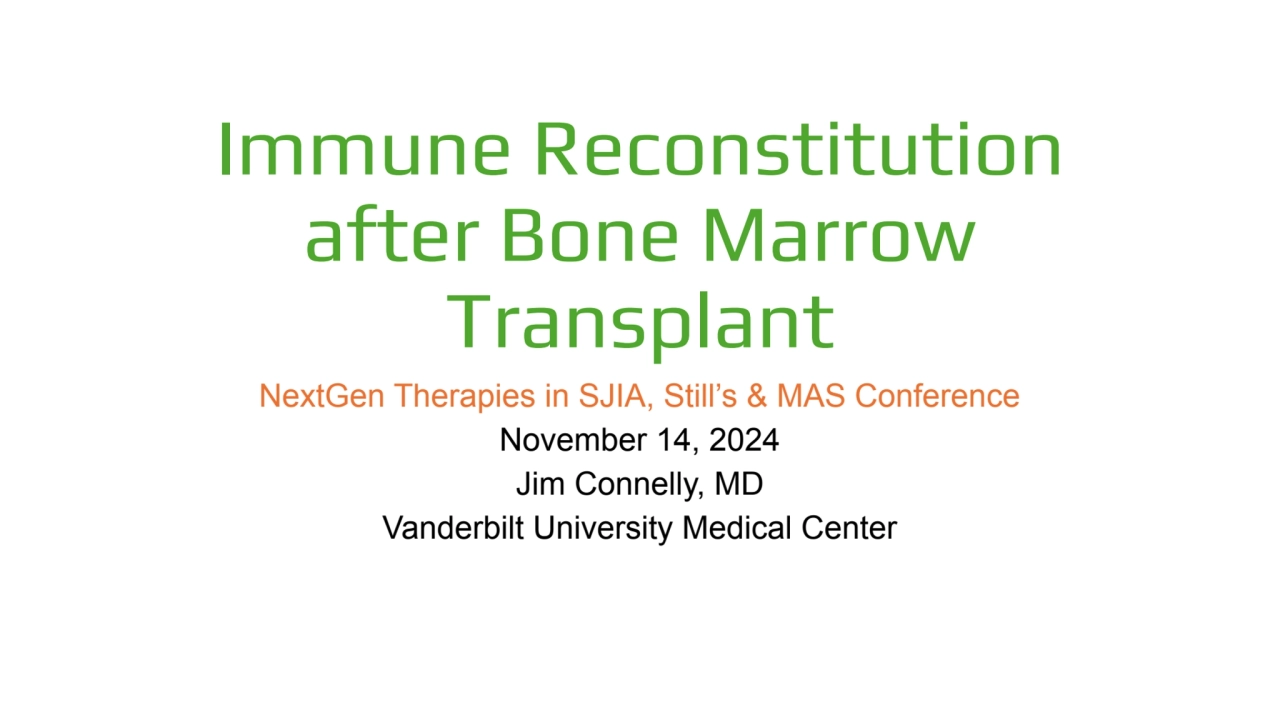
Loading...
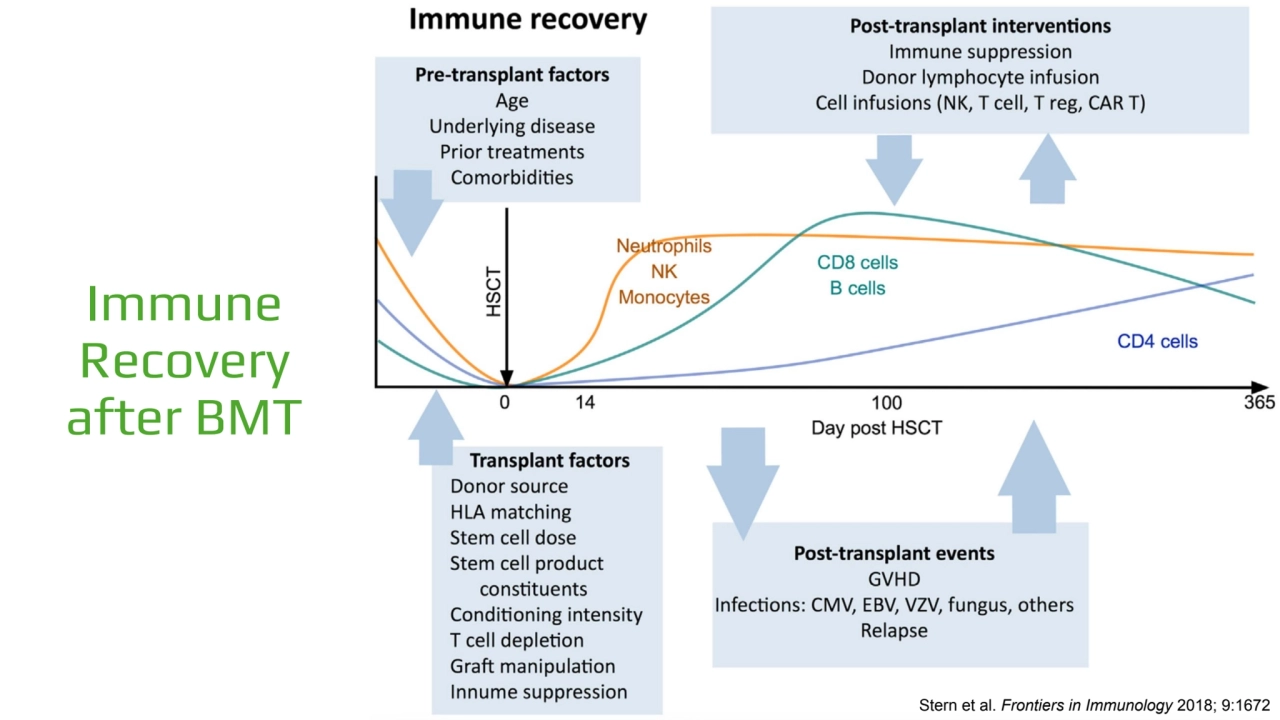
Loading...
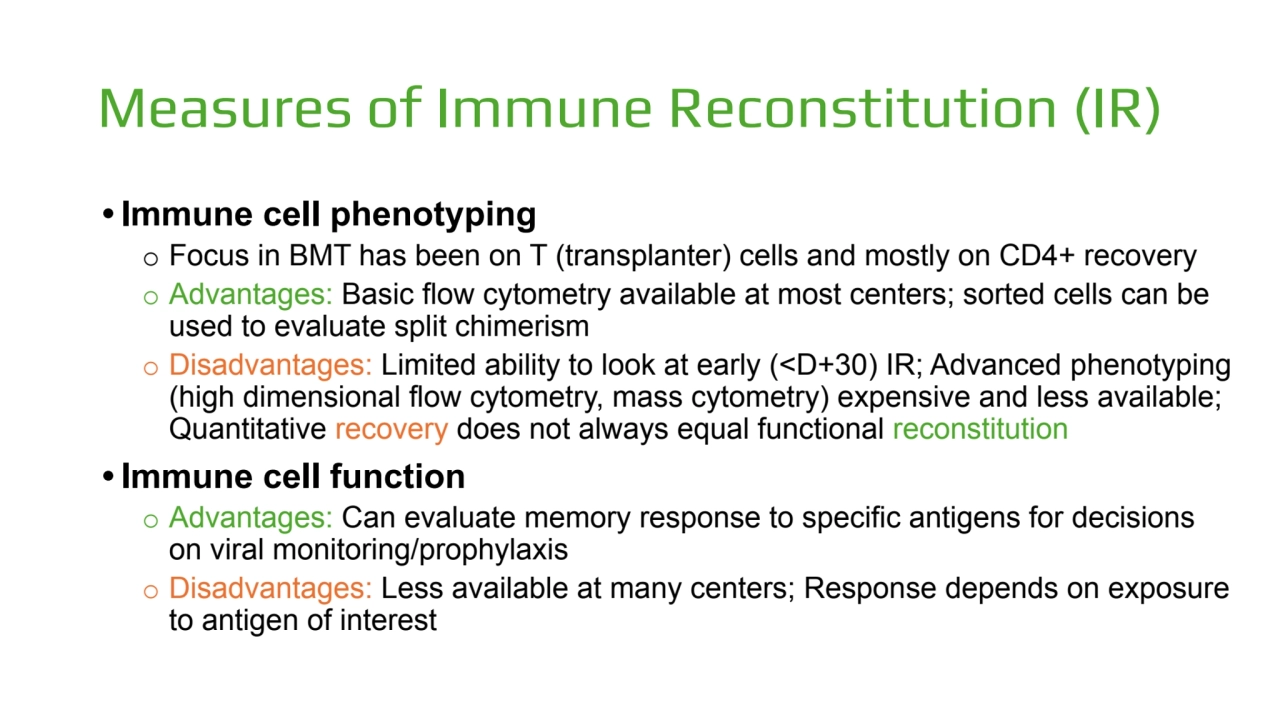
Loading...
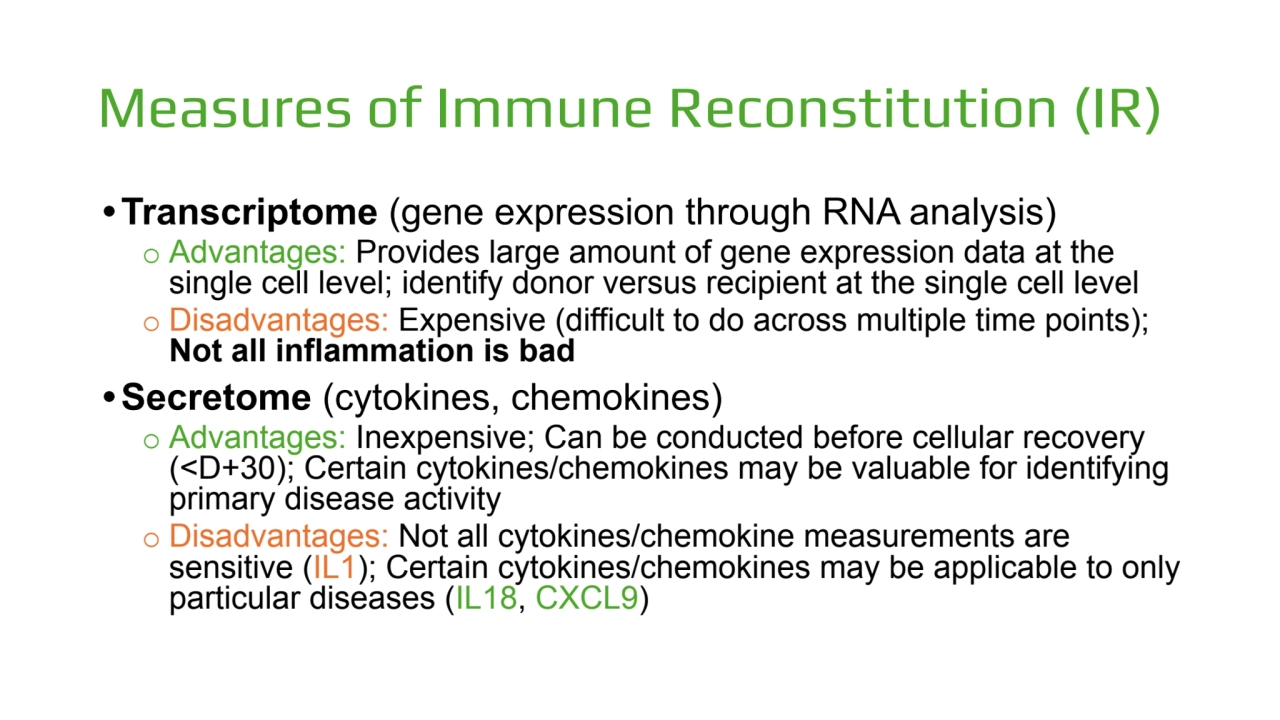
Loading...
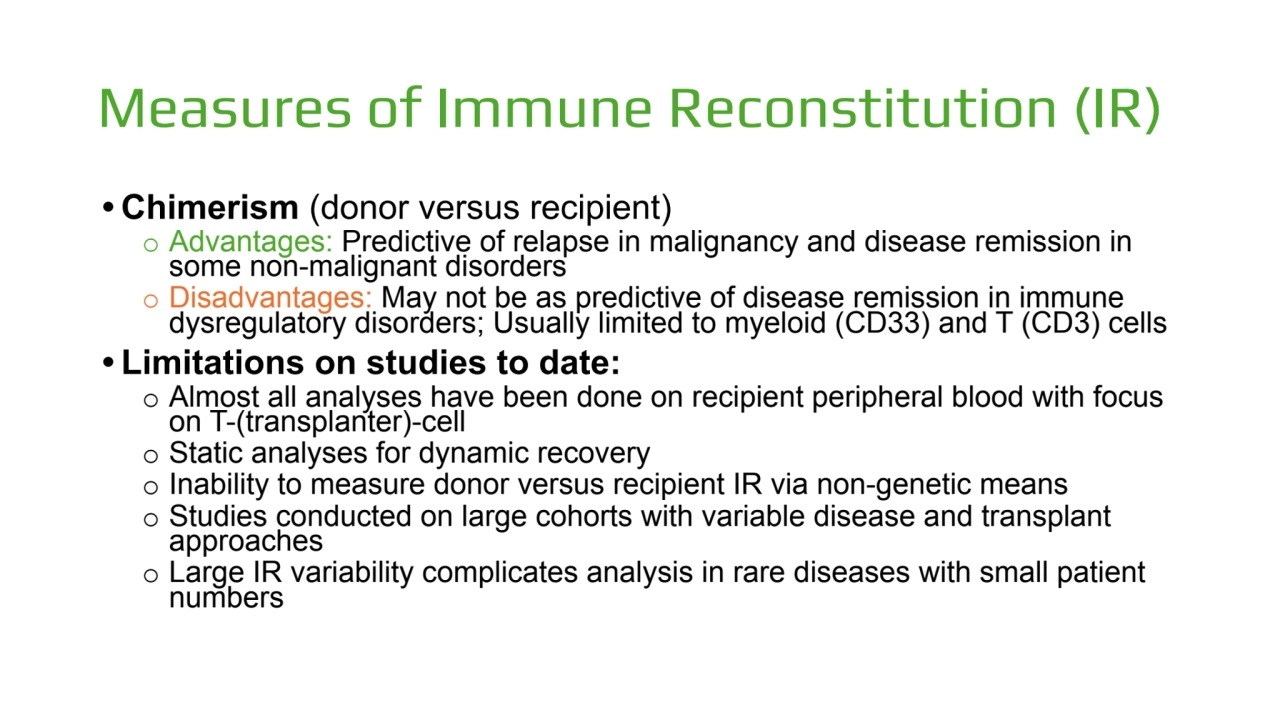
Loading...
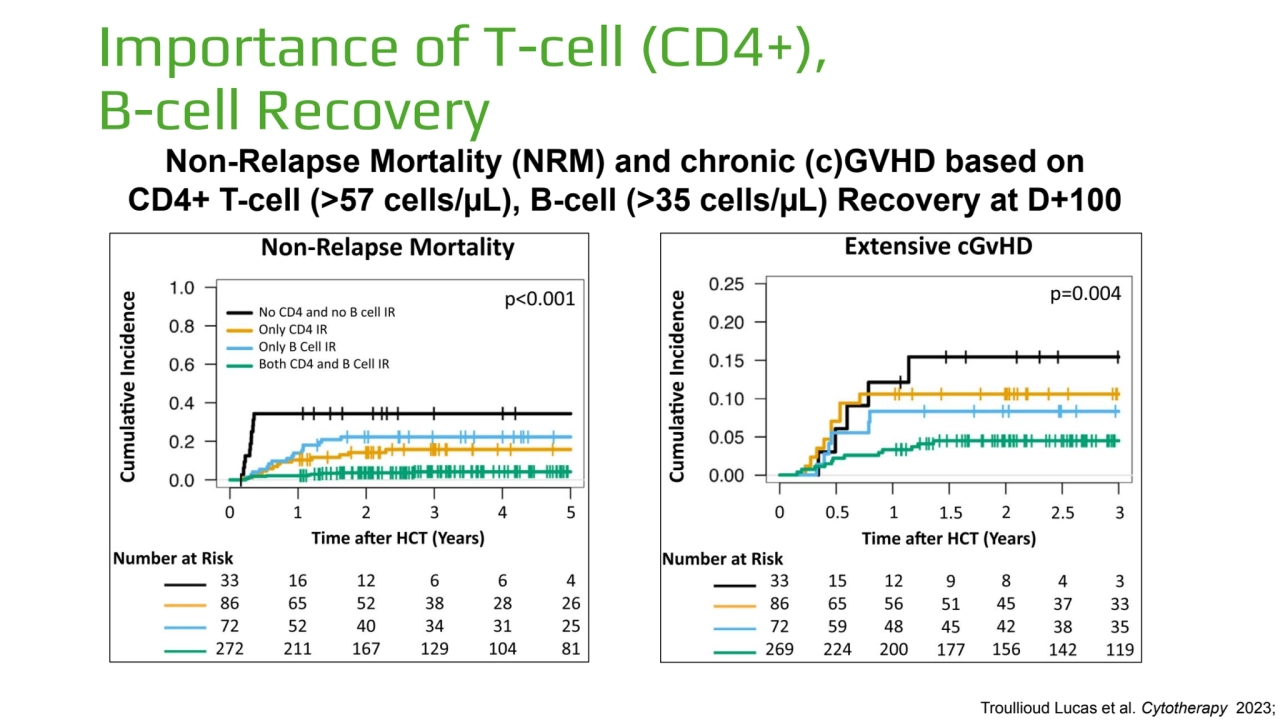
Loading...
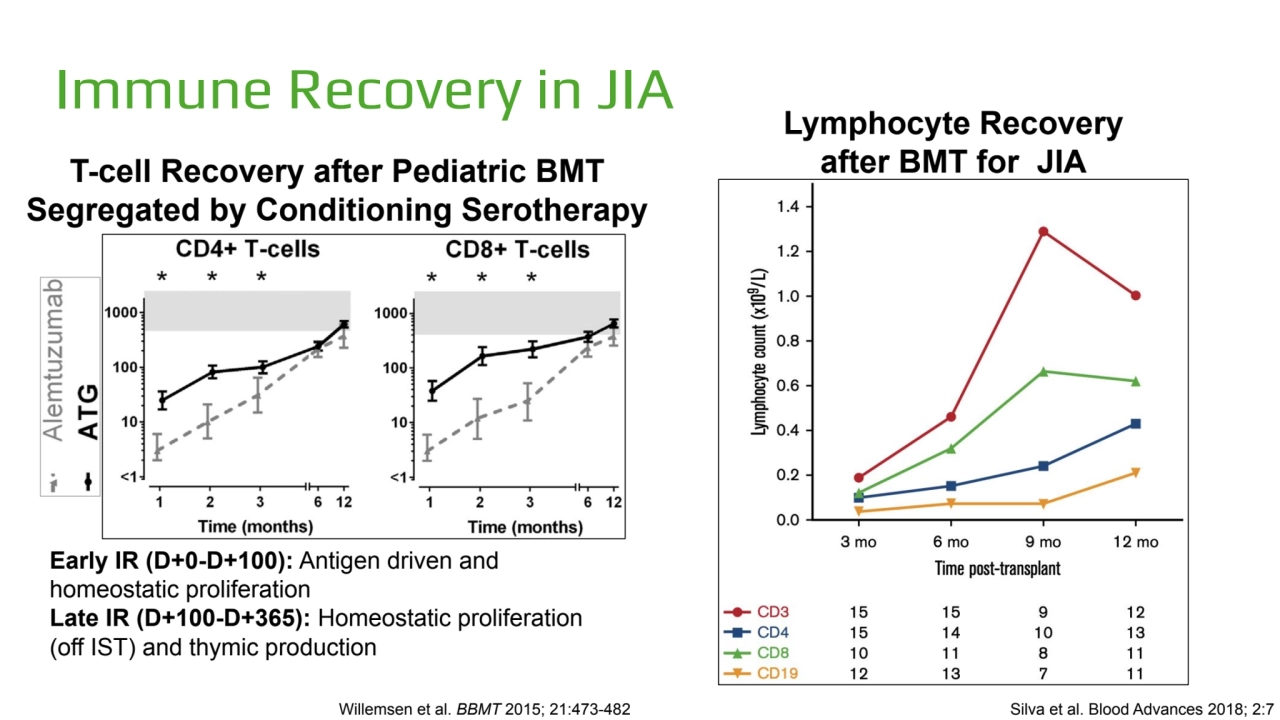
Loading...
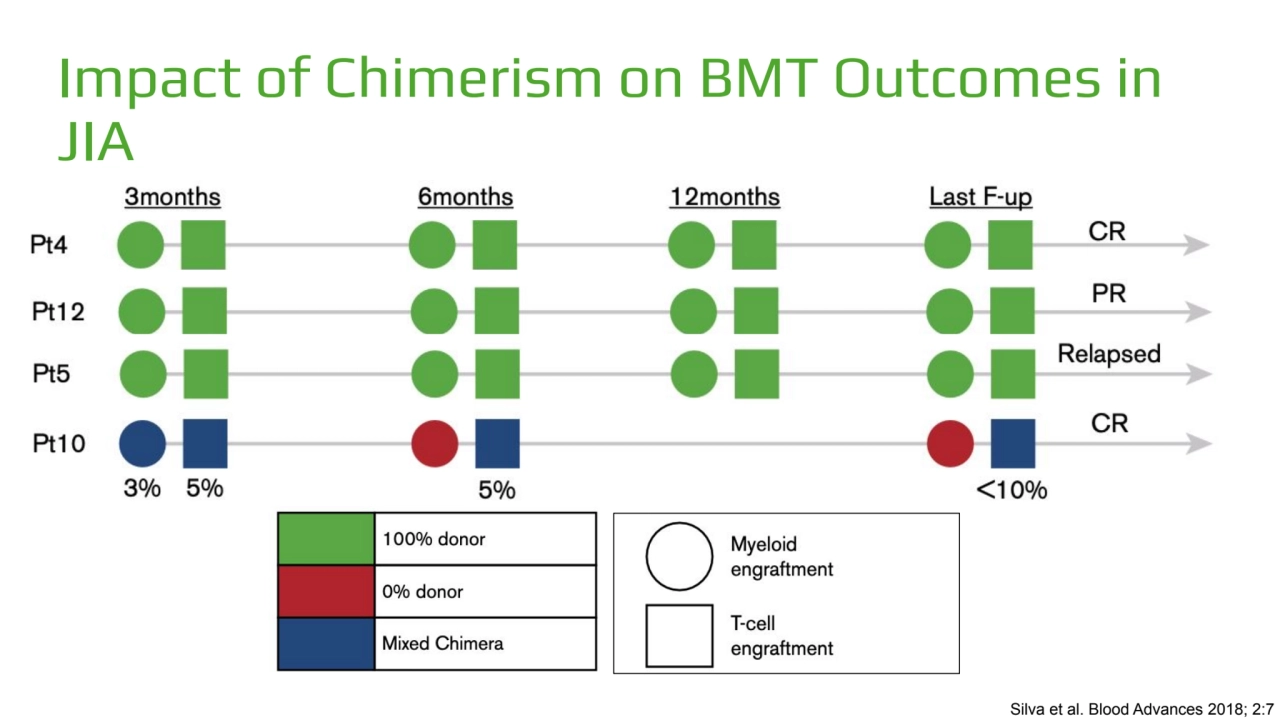
Loading...
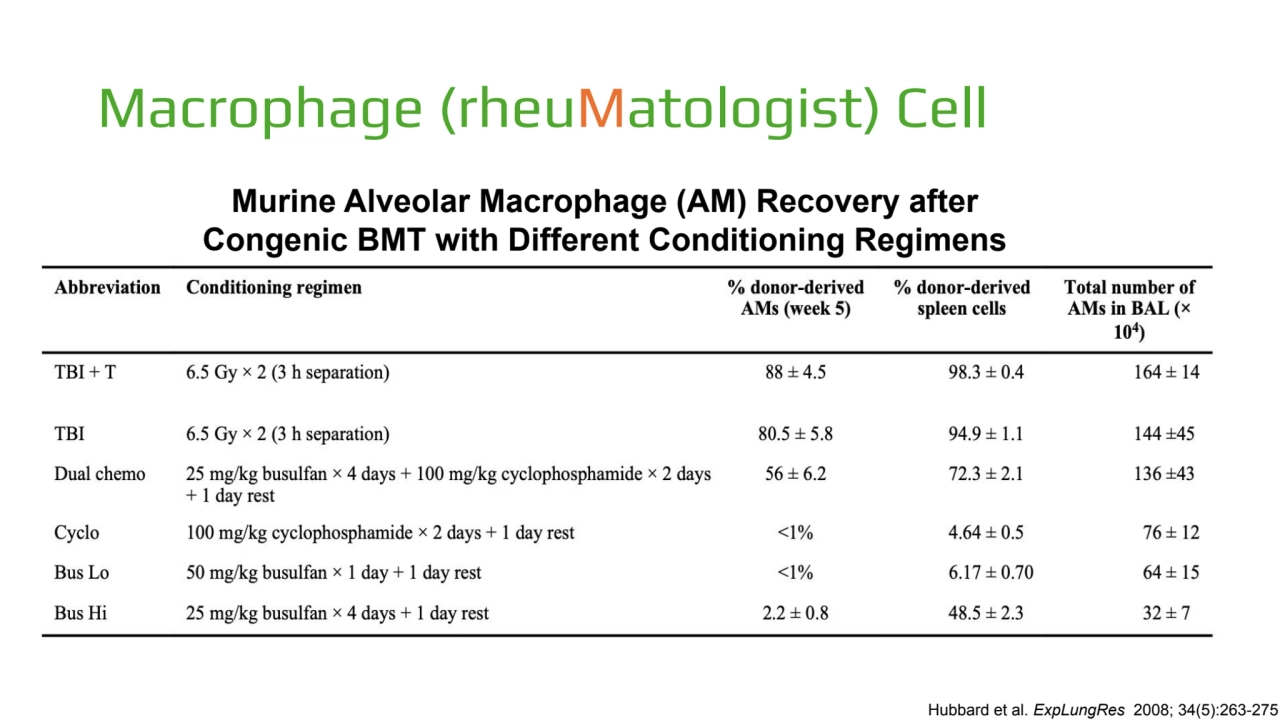
Loading...
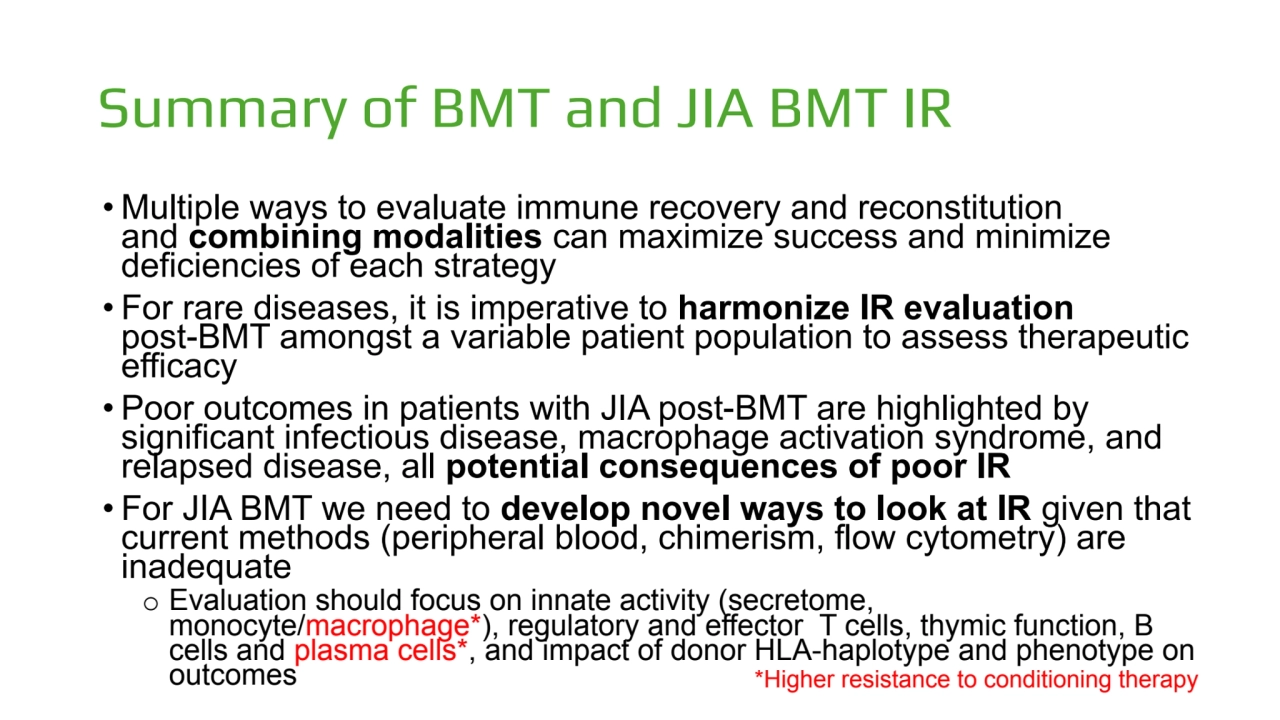
NextGen 2024: Bone Marrow Transplantation (BMT) Session Part 3
- 1. Immune Reconstitution after Bone Marrow Transplant NextGen Therapies in SJIA, Still’s & MAS Conference November 14, 2024 Jim Connelly, MD Vanderbilt University Medical Center
- 2. Immune Recovery after BMT Stern et al. Frontiers in Immunology 2018; 9:1672
- 3. Measures of Immune Reconstitution (IR) • Immune cell phenotyping o Focus in BMT has been on T (transplanter) cells and mostly on CD4+ recovery o Advantages: Basic flow cytometry available at most centers; sorted cells can be used to evaluate split chimerism o Disadvantages: Limited ability to look at early (<D+30) IR; Advanced phenotyping (high dimensional flow cytometry, mass cytometry) expensive and less available; Quantitative recovery does not always equal functional reconstitution • Immune cell function o Advantages: Can evaluate memory response to specific antigens for decisions on viral monitoring/prophylaxis o Disadvantages: Less available at many centers; Response depends on exposure to antigen of interest
- 4. Measures of Immune Reconstitution (IR) •Transcriptome (gene expression through RNA analysis) o Advantages: Provides large amount of gene expression data at the single cell level; identify donor versus recipient at the single cell level o Disadvantages: Expensive (difficult to do across multiple time points); Not all inflammation is bad •Secretome (cytokines, chemokines) o Advantages: Inexpensive; Can be conducted before cellular recovery (<D+30); Certain cytokines/chemokines may be valuable for identifying primary disease activity o Disadvantages: Not all cytokines/chemokine measurements are sensitive (IL1); Certain cytokines/chemokines may be applicable to only particular diseases (IL18, CXCL9)
- 5. Measures of Immune Reconstitution (IR) • Chimerism (donor versus recipient) o Advantages: Predictive of relapse in malignancy and disease remission in some non-malignant disorders o Disadvantages: May not be as predictive of disease remission in immune dysregulatory disorders; Usually limited to myeloid (CD33) and T (CD3) cells • Limitations on studies to date: o Almost all analyses have been done on recipient peripheral blood with focus on T-(transplanter)-cell o Static analyses for dynamic recovery o Inability to measure donor versus recipient IR via non-genetic means o Studies conducted on large cohorts with variable disease and transplant approaches o Large IR variability complicates analysis in rare diseases with small patient numbers
- 6. Importance of T-cell (CD4+), B-cell Recovery Non-Relapse Mortality (NRM) and chronic (c)GVHD based on CD4+ T-cell (>57 cells/µL), B-cell (>35 cells/µL) Recovery at D+100 Troullioud Lucas et al. Cytotherapy 2023;
- 7. Immune Recovery in JIA Early IR (D+0-D+100): Antigen driven and homeostatic proliferation Late IR (D+100-D+365): Homeostatic proliferation (off IST) and thymic production T-cell Recovery after Pediatric BMT Segregated by Conditioning Serotherapy Lymphocyte Recovery after BMT for JIA Willemsen et al. BBMT 2015; 21:473-482 Silva et al. Blood Advances 2018; 2:7
- 8. Impact of Chimerism on BMT Outcomes in JIA Silva et al. Blood Advances 2018; 2:7
- 9. Macrophage (rheuMatologist) Cell Murine Alveolar Macrophage (AM) Recovery after Congenic BMT with Different Conditioning Regimens Hubbard et al. ExpLungRes 2008; 34(5):263-275
- 10. Summary of BMT and JIA BMT IR • Multiple ways to evaluate immune recovery and reconstitution and combining modalities can maximize success and minimize deficiencies of each strategy • For rare diseases, it is imperative to harmonize IR evaluation post-BMT amongst a variable patient population to assess therapeutic efficacy • Poor outcomes in patients with JIA post-BMT are highlighted by significant infectious disease, macrophage activation syndrome, and relapsed disease, all potential consequences of poor IR • For JIA BMT we need to develop novel ways to look at IR given that current methods (peripheral blood, chimerism, flow cytometry) are inadequate o Evaluation should focus on innate activity (secretome, monocyte/macrophage*), regulatory and effector T cells, thymic function, B cells and plasma cells*, and impact of donor HLA-haplotype and phenotype on outcomes *Higher resistance to conditioning therapy